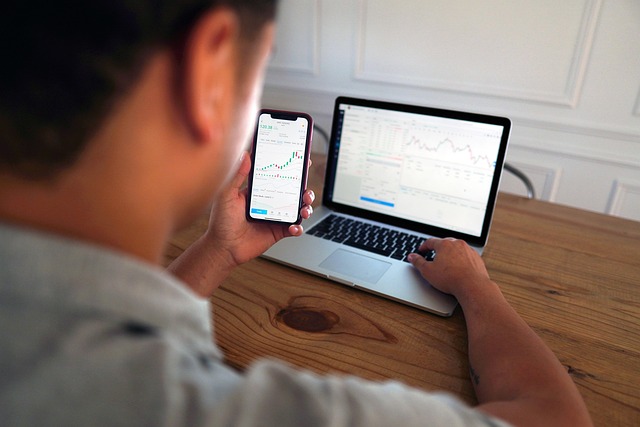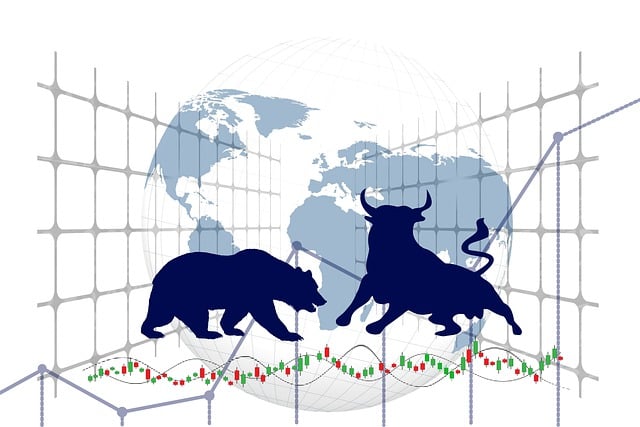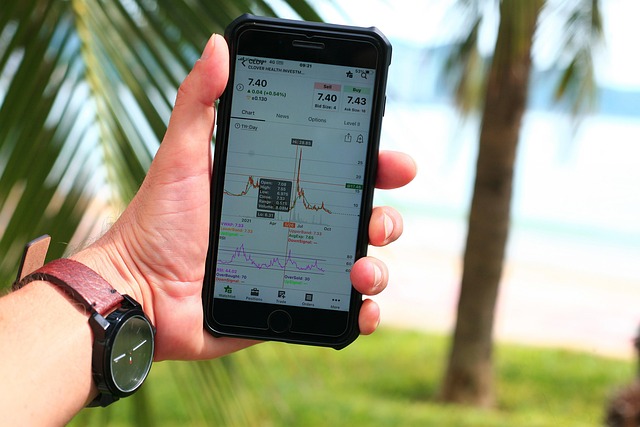Understanding What Is Trading Volume in Stock Market in 2025
Author: Jameson Richman Expert
Published On: 2025-09-19
Prepared by Jameson Richman and our team of experts with over a decade of experience in cryptocurrency and digital asset analysis. Learn more about us.
In the rapidly evolving landscape of the stock market in 2025, understanding core concepts like trading volume has become more critical than ever. Trading volume serves as a fundamental indicator of market activity, liquidity, and investor sentiment, offering traders and investors invaluable insights into market dynamics. As technological innovations, globalization, and the emergence of new asset classes such as cryptocurrencies, tokenized assets, and decentralized finance (DeFi) platforms reshape the financial ecosystem, a nuanced comprehension of trading volume enables market participants to gain a competitive edge. This comprehensive guide delves into what trading volume is, its significance in market analysis, how it influences price movements, and how its role has transformed in the modern financial environment of 2025.

What Is Trading Volume? An In-Depth Explanation
Trading volume quantifies the total number of shares, contracts, tokens, or units exchanged during a specific period—ranging from seconds and minutes to hours, days, or weeks. For stocks, a trading volume of 5 million shares indicates those shares changed hands within the selected timeframe. It is a vital metric because it reflects the level of market participation and activity, serving as a barometer for liquidity and investor interest. On technical charts, volume is typically visualized as vertical histogram bars positioned beneath price data, with each bar representing the traded units during that period—allowing traders to quickly identify periods of heightened or subdued activity.
Beyond raw counts, volume analysis encompasses multiple dimensions—such as absolute volume (total traded units), relative volume (compared to historical averages), and adjusted volume (which accounts for corporate actions like dividends, stock splits, or share buybacks). For example, a sudden spike in relative volume may indicate institutional involvement, increased trading interest, or significant news flow, often foreshadowing substantial price moves. In 2025, with the proliferation of high-frequency, real-time data streams enabled by advanced technology, such distinctions have become essential for precise market interpretation and timely decision-making.
The Significance of Trading Volume in Market Analysis
Trading volume's importance extends across various facets of market analysis, acting as a cornerstone for identifying trends, potential reversals, and market sentiment. Its significance includes:
- Market Liquidity and Price Discovery: Higher trading volume enhances liquidity, reducing the bid-ask spread and facilitating smoother trade executions. This is especially crucial in 2025's high-frequency environment, where milliseconds matter. Improved liquidity ensures that large institutional orders do not overly impact prices, leading to more accurate price discovery and market efficiency.
- Trend Confirmation and Reversal Signals: When a price trend is accompanied by high volume, it signals strong conviction among traders, increasing the likelihood of trend continuation. Conversely, declining volume during a trend's advance or decline can warn of weakening momentum and potential reversals.
- Breakout and Breakdown Validation: Breakouts above resistance or breakdowns below support levels are deemed more reliable when supported by increased volume. This reduces false signals often caused by low-liquidity conditions, which are prevalent in 2025’s fragmented and often manipulated markets—be it stocks, cryptocurrencies, or emerging asset classes.
- Detection of Large-Scale Institutional Trades: Sudden volume surges often indicate institutional activity, such as hedge funds or mutual funds executing sizable trades. Recognizing these can help traders predict sustained moves driven by fundamental market participants.
- Market Psychology and Sentiment Analysis: Fluctuations in volume often mirror collective investor sentiment—manifesting as greed, fear, optimism, or panic. For example, a spike in volume during a rally suggests robust investor confidence, while a volume decline amid a price drop may imply capitulation or exhaustion of selling pressure.
Historical Perspectives and Personal Insights on Trading Volume
My journey into understanding trading volume began over a decade ago, initially focusing solely on price charts and technical patterns. Early in my career, I underestimated volume's significance, viewing it as secondary to price movements. However, repeated experiences of false breakouts and misleading signals underscored the importance of volume confirmation. I vividly recall a breakout that initially appeared promising but failed shortly after because it lacked volume support—highlighting that a move without volume backing often lacks conviction.
This lesson compelled me to integrate volume analysis into my routine, transforming my approach from reactive to proactive. Recognizing divergence patterns—where price advances while volume diminishes—became a vital skill. Over time, I learned that volume acts as the market's pulse, indicating whether a trend is genuinely supported or merely speculative noise. In volatile environments like those of 2025, volume analysis has proven indispensable for filtering out false signals and identifying high-probability setups.

Pattern Recognition and Strategic Utilization of Volume
Years of experience reveal several key volume patterns that often precede significant price actions:
- Volume Spikes at Critical Support/Resistance Levels: When price approaches a key support or resistance level, a surge in volume can validate the level's strength. For instance, a breakout above resistance with a substantial volume spike indicates strong buying interest, increasing the probability of a sustained move. Conversely, a high-volume rejection at resistance may signal a bearish reversal.
- Volume Divergence: Divergence occurs when price trends in one direction while volume trends oppositely. An uptrend with declining volume may point to weakening momentum, signaling an impending reversal or consolidation. Conversely, increasing volume during an upward move suggests accumulating buying interest, supporting the trend.
- Accumulation and Distribution Phases: Prolonged periods of high volume often mark accumulation (large-scale buying by institutions) or distribution (profit-taking). Recognizing these phases helps traders anticipate whether a trend will continue or reverse. For example, sustained high volume during sideways movement often precedes a breakout or breakdown.
Incorporating volume analysis with technical indicators like Moving Averages, RSI, MACD, or Bollinger Bands enhances predictive power. For example, a breakout confirmed by high volume combined with RSI moving out of oversold or overbought zones provides a more reliable entry point, reducing false signals especially prevalent in the fast-moving markets of 2025.
The Transformation of Trading Volume in 2025
By 2025, the concept of trading volume has expanded far beyond traditional stock exchanges to encompass digital assets, cryptocurrencies, DeFi platforms, and cross-chain ecosystems. The advent of 24/7 trading, real-time high-frequency data streams, and advanced analytics tools has revolutionized how traders interpret volume data.
Platforms such as Binance, MEXC, Bitget, and Bybit provide detailed order book data, liquidity metrics, and transaction volumes that are accessible to retail traders. These datasets enable sophisticated analysis—like detecting large institutional “whale” trades, market depth shifts, and order flow dynamics—empowering individual traders with insights previously reserved for institutional players. Moreover, blockchain transparency allows on-chain volume analysis, offering a new dimension of market intelligence.
Cryptocurrency Markets and Volume Dynamics in 2025
Cryptocurrencies exemplify the transformative evolution in volume behavior. Their high volatility, continuous trading (24/7), and on-chain activity generate dynamic volume patterns that can rapidly trigger price surges or declines. For example, a sudden spike in Bitcoin or altcoin trading volume often correlates with news events, regulatory developments, or the entry of institutional investors.
Analyzing on-chain transaction costs and fee structures, such as Binance transaction costs in 2025, reveals how fee reductions incentivize higher trading activity, boosting overall volume. Additionally, technological advancements like layer-2 scaling solutions (e.g., Lightning Network, Optimistic Rollups) and cross-chain bridges facilitate higher throughput and liquidity, enabling more granular volume data analysis—crucial for understanding liquidity flows, market depth, and on-chain investor behavior.

Market Dominance and Altcoin Rotation Based on Volume Trends
A hallmark of 2025’s crypto markets is the shifting dominance between Bitcoin and various altcoins. Volume disparities serve as indicators of investor sentiment and rotation strategies. Spikes in altcoin trading volumes relative to Bitcoin often signal speculative interest or a potential altcoin season, whereas declining altcoin volumes may suggest profit-taking or a return to Bitcoin’s safety profile.
Analysis of Bitcoin vs. altcoin volume trends in 2025 offers insights into risk management, diversification, and strategic positioning—crucial for navigating a highly volatile and rapidly changing market landscape. Recognizing these shifts allows traders and investors to time entries and exits more effectively, capitalizing on rotation cycles and emerging opportunities.
Tools and Platforms to Harness Volume Data in 2025
Success in 2025’s markets depends heavily on access to advanced trading tools and analytics platforms. Leading exchanges like Binance, MEXC, Bitget, and Bybit provide real-time volume metrics, order book analytics, and customizable charting features. Complementing these, data aggregators such as CoinMarketCap, CoinGecko, TradingView, and CryptoCompare offer comprehensive volume data, on-chain metrics, and liquidity insights.
Registering on these platforms grants instant access to vital data streams, enabling traders to identify high-confidence setups based on volume signals. Examples include:
Additionally, specialized on-chain analytics tools such as Glassnode, Santiment, and Nansen provide macro-level insights into liquidity flows, large holder activity, and emerging volume trends—crucial for strategic decision-making in a complex, multi-asset environment.
Conclusion: Mastering Volume Analysis for Success in 2025
In conclusion, mastering trading volume remains a fundamental skill for navigating the complexities of 2025's markets. It offers critical signals about market strength, liquidity, investor psychology, and potential trend reversals. As data analytics and technological tools become ever more sophisticated, integrating volume analysis into broader trading strategies enhances decision-making accuracy. Traders who develop an acute awareness of volume patterns—such as spikes, divergences, and accumulation phases—will be better positioned to capitalize on opportunities and mitigate risks amid rapidly shifting markets. Continuous learning, leveraging cutting-edge analytics, and staying informed about evolving volume behaviors—like those highlighted in studies such as the Binance transaction cost analysis—are essential for thriving in 2025 and beyond.